Here we are, back with another salmonid from Replica Toy Fish–but, as promised, not a trout! Or a charr for that matter. Instead, we are looking at an actual salmon figure, the Chinook salmon or king salmon, Oncorhynchus tshawytscha, released in the same wave as the rest of the previous trout and charr figures. Interestingly, this is the first fish that would not be considered primarily ‘freshwater’ since the Striped Bass (3″ figure by Replica Toy Fish) discussed many posts back, but instead is of course an anadromous fish, spawning upstream in rivers, heading to sea to mature and grow, then returning back upstream to spawn and die. Many fish are known for this, but salmon seem to be one of those exemplary examples (although several of the previous trout have populations that do the same.
The Chinook salmon (capitalized ‘C’ because it is named for the indigenous Chinook Tribe peoples) also has the name ‘king’ (among many other names) due it’s large size and high value throughout its north Pacific range, from Rivers in eastern Asia in Japan through Siberia, across the Bering Strait down to California (and introduced elsewhere). While most adults are around 60 – 90cm (24″ – 35″) long, giants of up to 150 cm (almost 60″) can be caught; these would typically be males as there is sexual size dimorphism in Chinooks, with males being larger. They are popular with anglers for their large size and spirited fight, and commercially valuable for their meat. The IUCN lists them as Least Concern, although there are populations affected by habitat disruption and climate change.
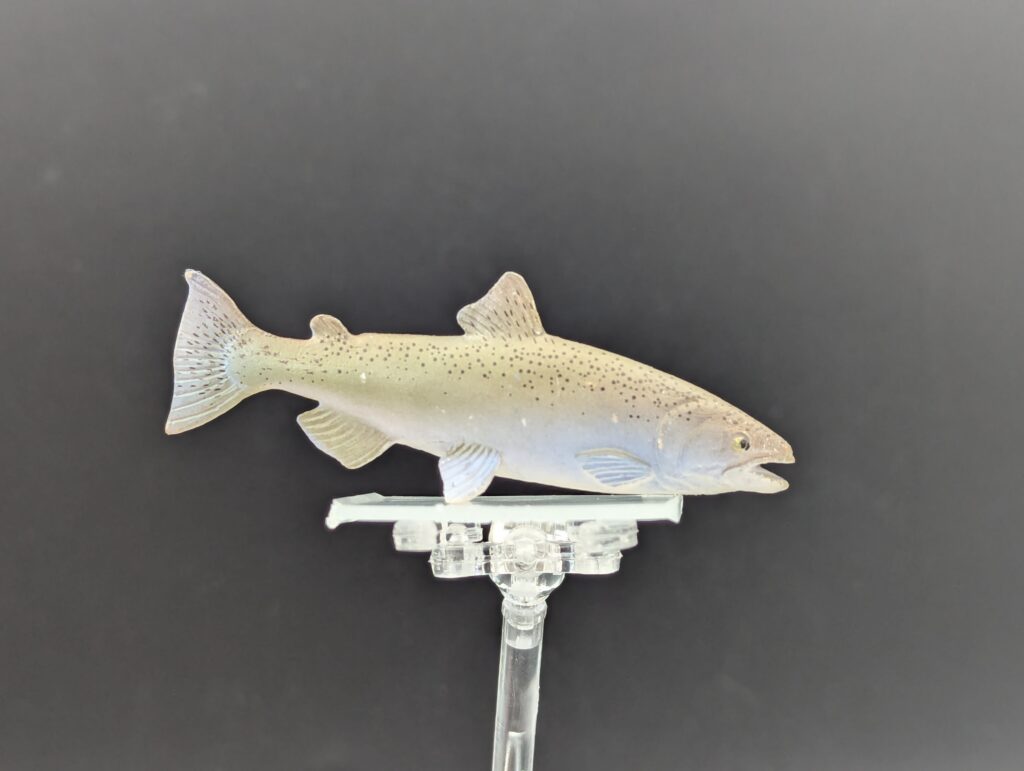
One thing notable about many anadromous salmon is that their journey often comes with distinct physical changes in the adults as they move back upstream. Many salmon (especially males like this cherry salmon) undergo a transformation that is radically different in not only colour, but face and proportions as well. Chinook also see changes, from a more bluish body to a more golden colour, and males develop larger canines and a hook (‘kype’) in the jaw, though less extreme than in other species. Their preferred habitat for spawning is clear, clean, moving water with gravel beds that are free of finer sediment where the fry can hatch and hunt small invertebrates. Once they reach the ocean (some go immediately, some wait a year), they remain in estuarine environments until they are fully acclimated to an oceanic lifestyle, active predators at all times to grow large and strong enough to head back up river.
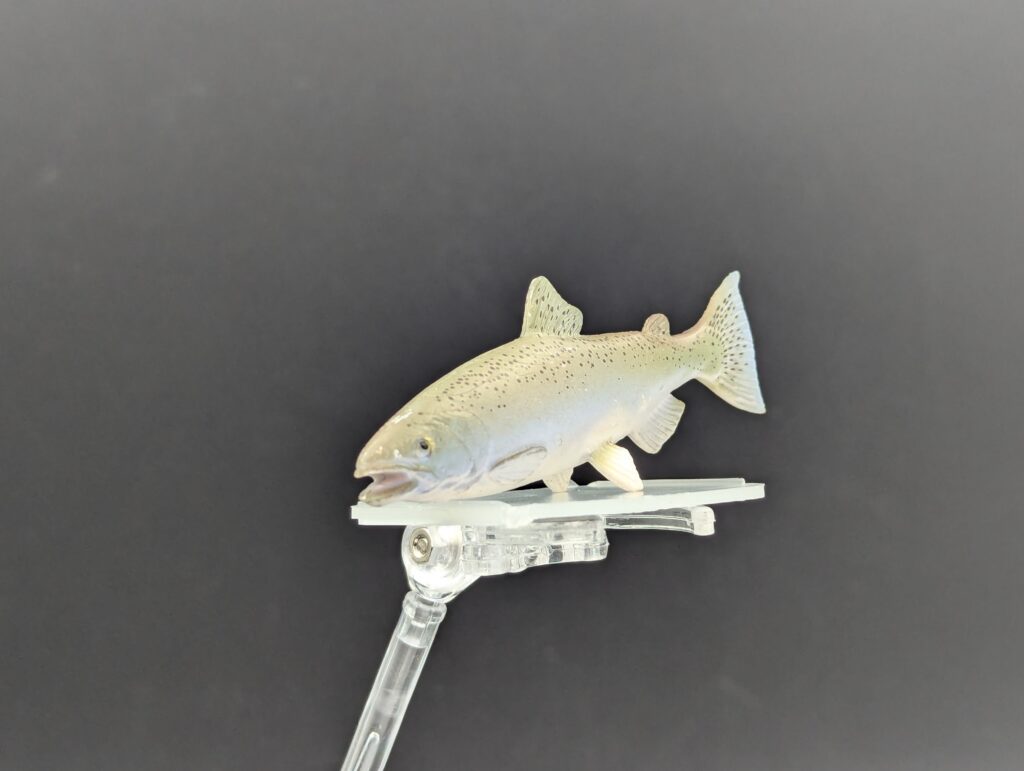
The Chinook salmon figure is notable for representing a fish that has not physically changed into a breeding adult male, but given the colour appears to be adult enough to begin the upstream migration, so could be a female or young male (2-year-old individuals sometimes head up before being fully physically mature). In this instance, the dorsal colour is a lighter olive shade; breeding colour is more gold, but it is certainly not the silvery blue of an oceanic individual; it could have been a darker shade for sure (but see my note at the end). The back, the dorsal and adipose fin, and the entire tail are covered with numerous small spots, the latter of which is an identifying characteristic for Chinooks where they overlap with other species like coho salmon. There is a slight gray band down the side separated the belly that is unpainted white, as are the paired fins save for some olive highlights. The large anal fin is just olive, no markings. Unusually for RTF, the mouth is wide open with just a hint of pink inside–the gums of a Chinook should be black, not white, but the figure is otherwise coloured mostly right (especially since fish colours can be incredibly instraspecifically variable). But the tail spots on the upper and lower lobe? Definite Chinook feature.
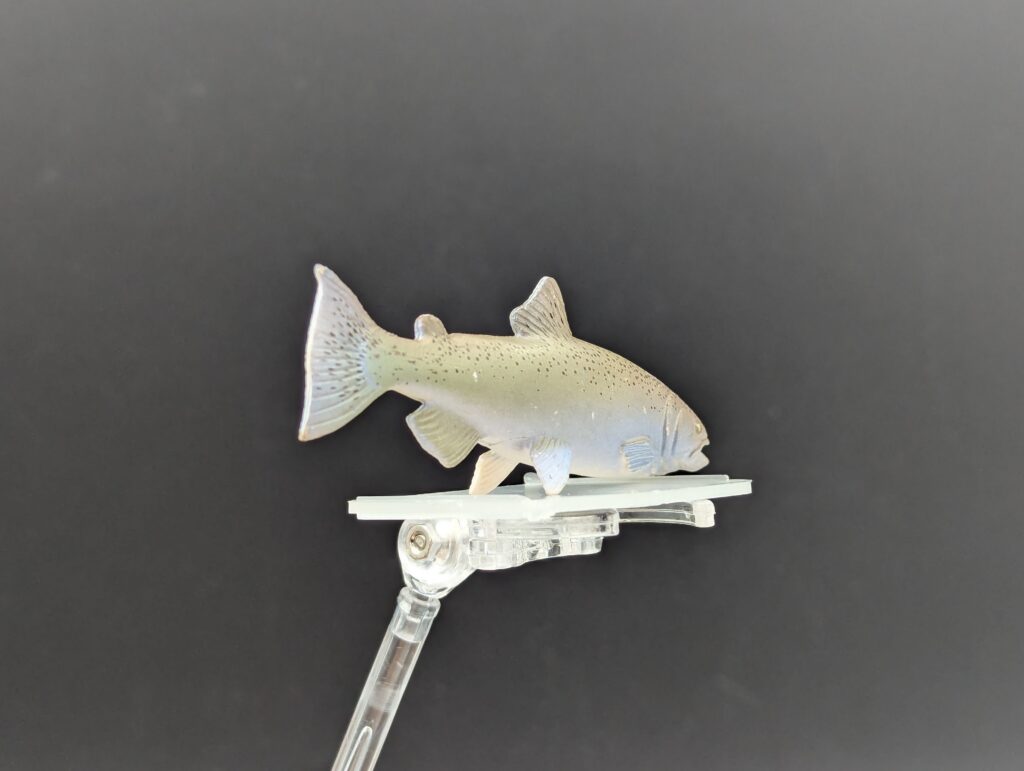
The figure itself is 8cm (3.1″) long, so for a very large 100cm fish would be about 1:13; a 150cm monster would be 1:19 but I don’t think it’s a male, so wouldn’t be that big. The sculpt is very salmonid like, with a slender, fusiform shape and smooth texturing. The dorsal fin is large, with a trailing edge, and the adipose fin is large and round. The pectoral fins are sculpted against the body (a common RTF feature, but not universal) and the anal fin is almost too large, and quite squared. The caudal fin is convexly emarginate, with pronounced points on the tips of the lobes; I think in Chinooks the tail would have fewer curves and have just a curve inside the edge, but it does look near. The head looks relatively expressive, possibly because this is another rare RTF fish that has an open mouth, with distinct lips around the margins. Again, no sign of a kype here, so this is not a fully breeding individual.
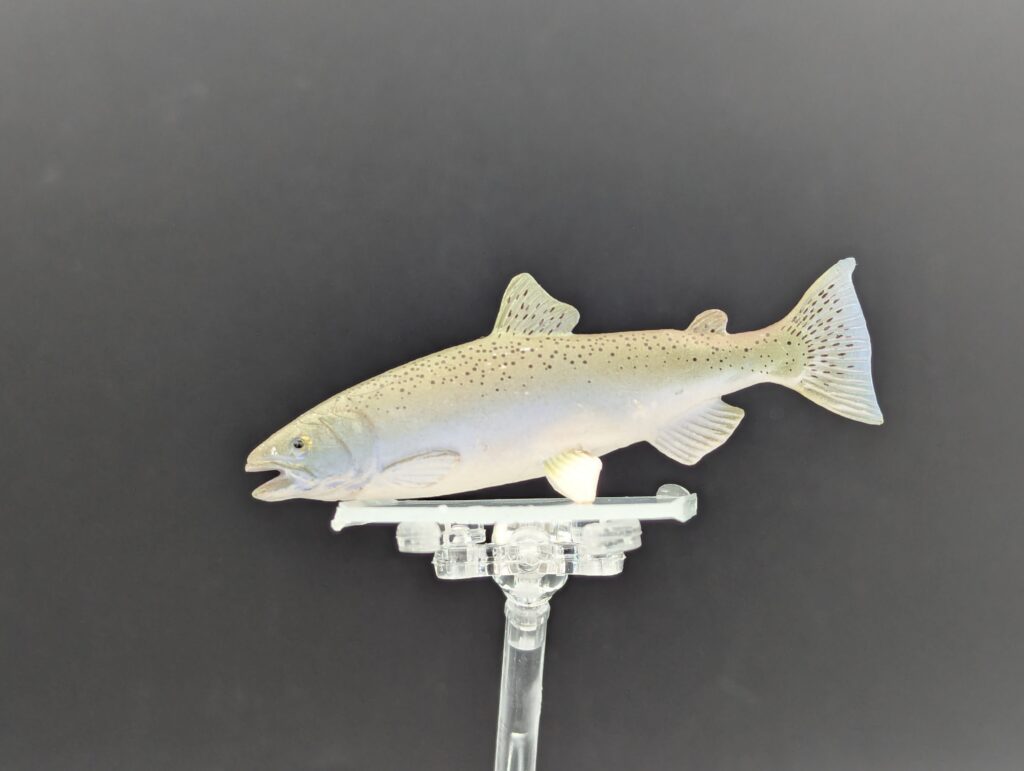
Overall, this a decent salmonid figure, and is interesting more because it does not portray the heavy breeding morphology of a salmon that is often very striking–so more popular with toys (Safari and Wild Republic both did them for example–and a few Yujin ones as well). Instead, we have a figure that is more in its typical form, although the colour is bit off. Speaking of, I will mention that the quality of the paint application is less than stellar; this run of figures is partially why RTF changed over–their source wasn’t meeting their standards and it became frustrating. Another small tidbit–when I first brought in these figures to my store, they were listed as steelhead. Sea-run rainbow trout. Which…it could be. Sea-run salmonids are all sort of similar, and they’re all the same genus. But, I am deferring to the RTF identification. Plus, while not always present, steelhead often do have at least a hint of the red or pink band along the side, and this figure has none of that. It’s also entirely possible that this same mold was going to see double duty, which wouldn’t be a first for RTF (though never for released models…) Anyway, as I said, we’re reaching the end of the released for retail figures, just one more coming up!
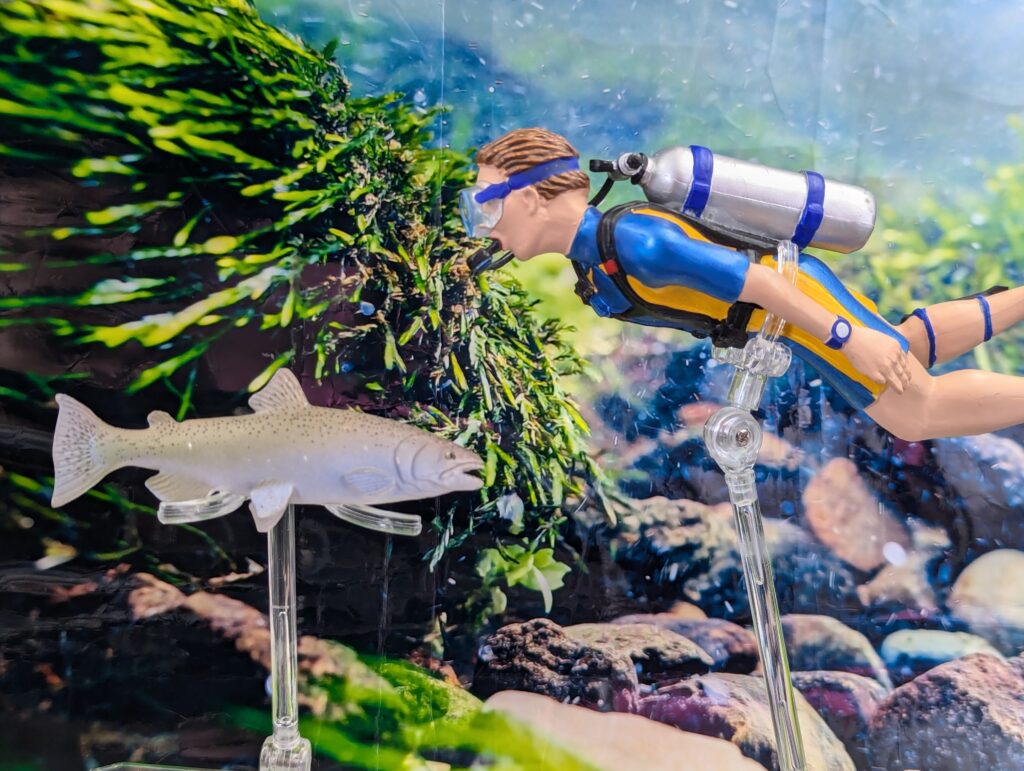
Disclaimer: links to Ebay and Amazon on the AnimalToyBlog are affiliate links, so we make a small commission if you use them. Thanks for supporting us!



